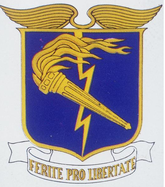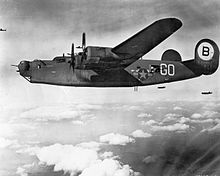
The 320th Air Expeditionary Wing is a provisional United States Air Force unit assigned to the Air Force District of Washington. It is stationed at Bolling AFB, District of Columbia. The 320 AEW may be activated or inactivated at any time.

The 310th Space Wing is an Air Reserve Component (ARC) of the United States Air Force. It is assigned to the Tenth Air Force, Air Force Reserve Command, stationed at Schriever Space Force Base, Colorado. The wing is the only space wing in the Air Force Reserve. It provides specialized expertise, continuity and combat ready personnel. It is mission partnered with several United States Space Force deltas: Space Delta 2, Space Delta 3, Space Delta 4, and Space Launch Delta 30.

The 512th Rescue Squadron is part of the 58th Special Operations Wing based at Kirtland Air Force Base, New Mexico. It formerly operated the Bell UH-1N Twin Huey and currently operates the Sikorsky HH-60G Pave Hawk and the new HH-60W Jolly Green II helicopters training aircrew conducting search and rescue missions.
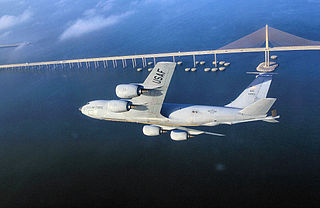
The 91st Air Refueling Squadron is part of the 6th Air Mobility Wing at MacDill Air Force Base, Florida. It operates the Boeing KC-135R Stratotanker aircraft conducting air refueling missions.

The 93rd Air Refueling Squadron is an active United States Air Force unit, stationed at Fairchild Air Force Base, Washington, where it is assigned to the 92nd Operations Group and operates the Boeing KC-135 Stratotanker aircraft conducting air refueling missions.

The 344th Air Refueling Squadron is a unit of the US Air Force, part of the 22d Air Refueling Wing of Air Mobility Command at McConnell Air Force Base, Kansas. It operates the Boeing KC-46 Pegasus aircraft conducting aerial refueling missions.

The 2bd Bombardment Squadron is an inactive United States Air Force unit. Its last assignment as a Boeing B-52 Stratofortress squadron was with the Strategic Air Command 22nd Bombardment Wing stationed at March Air Force Base, California. It was inactivated on 1 October 1982. The unit was redesignated as the 2nd Strategic Squadron as a Boeing KC-135 Stratotanker rotational squadron with the 306th Strategic Wing and was last active at RAF Mildenhall, England in 1992.

The 307th Operations Group is an Air Reserve Component of the United States Air Force. It is assigned to the 307th Bomb Wing, Air Force Reserve Command, stationed at Barksdale Air Force Base, Louisiana.

The squadron was organized in March 1942 as the 380th Bombardment Squadron and trained in the Southeastern United States with North American B-25 Mitchells. In September, the air echelon of the unit moved to the United Kingdom in preparation for Operation Torch, the allied invasion of North Africa. In November, the squadron was reunited in French Morocco. It continued in combat in the Mediterranean Theater of Operations until V-E Day, earning two Distinguished Unit Citations. It was inactivated in September 1945 in Italy.

The 301st Operations Group is a flying component of the 301st Fighter Wing, assigned to the United States Air Force Reserve Tenth Air Force. The group is stationed at Carswell Field, Texas.

The 28th Operations Group is the flying component of the United States Air Force 28th Bomb Wing, stationed at Ellsworth Air Force Base, South Dakota.
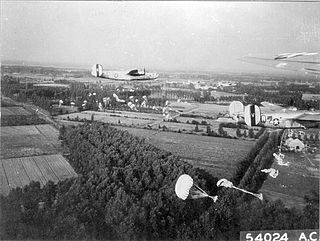
The 506th Bombardment Squadron is an inactive United States Air Force unit. It was last assigned to the 44th Bombardment Wing at Chennault Air Force Base, Louisiana, where it was inactivated on 15 June 1960.

The 329th Combat Crew Training Squadron is an inactive United States Air Force unit. It was last assigned to the 93d Operations Group at Castle Air Force Base, California, where it was responsible for the training of Boeing B-52 Stratofortress aircrews until inactivating on 1 July 1994.

The 330th Combat Training Squadron is a United States Air Force unit assigned to the 461st Air Control Wing based at Robins Air Force Base, Georgia.
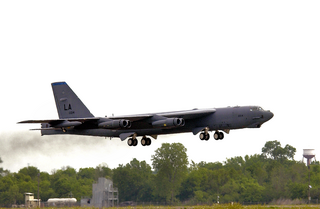
The 340th Weapons Squadron is a United States Air Force unit assigned to the USAF Weapons School. It is stationed at Barksdale Air Force Base, Louisiana. The 340th is assigned to the 57th Wing, at Nellis Air Force Base, Nevada. The mission of the squadron is to provide Boeing B-52 Stratofortress instructional flying.
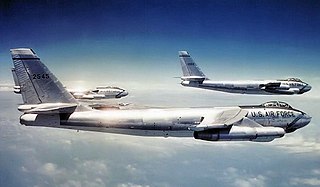
The 368th Training Squadron is a United States Air Force ground training unit, located at Fort Leonard Wood, Missouri. The squadron reports to the 782d Training Group, part of the 82d Training Wing, at Sheppard Air Force Base, Texas and conducts training for airmen in civil engineering, as well as in Logistics Readiness in Ground Transportation.

The 353d Bombardment Squadron is an inactive United States Air Force unit. It last was assigned to the 301st Bombardment Wing, stationed at Lockbourne Air Force Base, Ohio. It was inactivated on 8 June 1964.

The 352d Bombardment Squadron is an inactive United States Air Force unit. It was last assigned to the 301st Bombardment Wing at Lockbourne Air Force Base, Ohio, where it was inactivated on 8 June 1964.
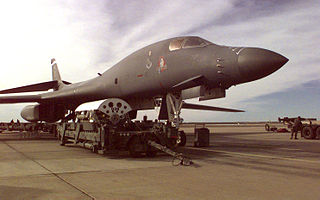
The 345th Bomb Squadron is a United States Air Force Reserve squadron, assigned to the 489th Bomb Group. It is stationed at Dyess Air Force Base, Texas, where it is an associate unit of the 7th Bomb Wing.

The 342d Bombardment Squadron is an inactive United States Air Force unit. It was last assigned to the 4137th Strategic Wing at Robins Air Force Base, Georgia, where it was inactivated on 1 February 1963.


